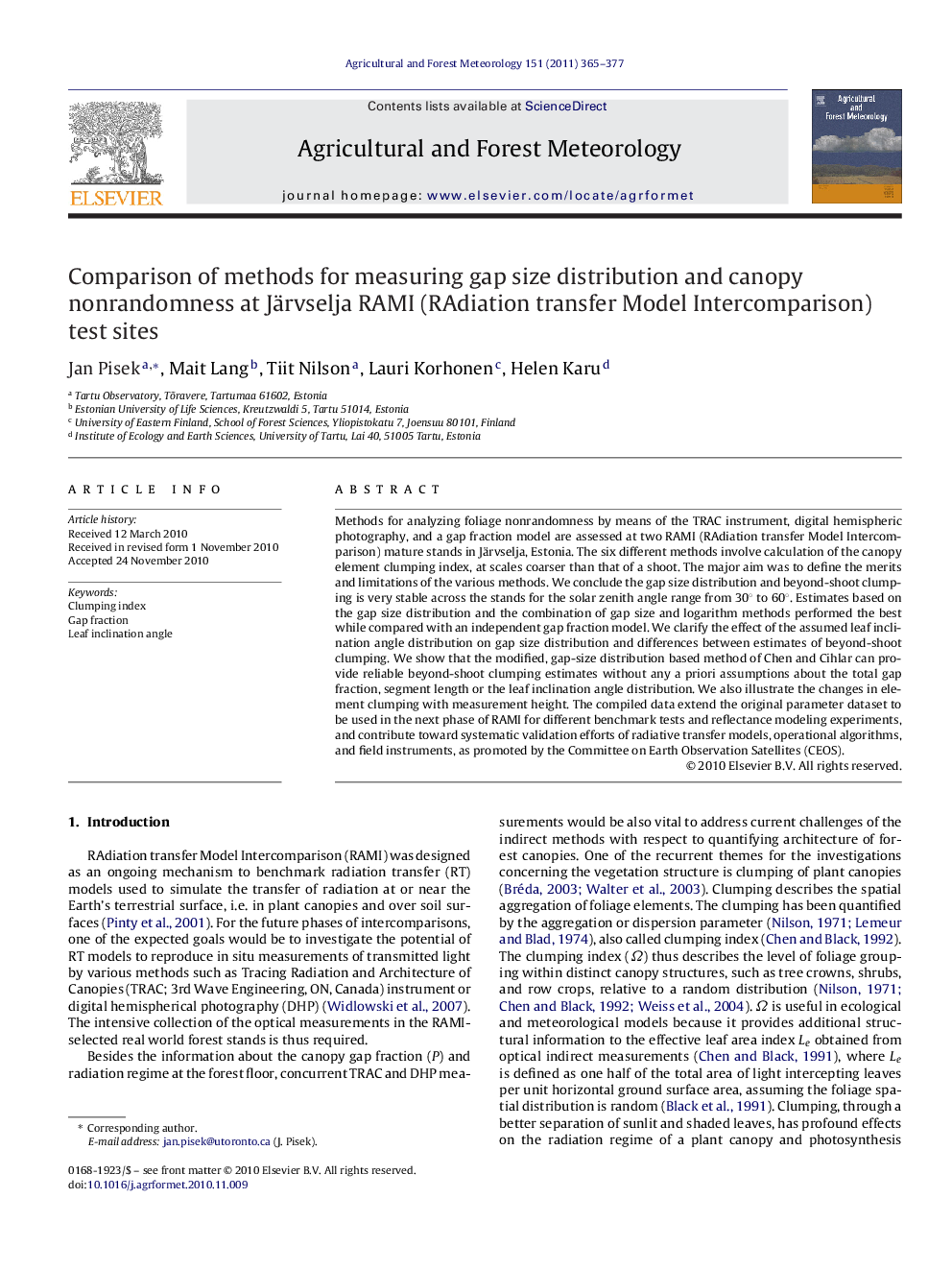| Article ID | Journal | Published Year | Pages | File Type |
|---|---|---|---|---|
| 82168 | Agricultural and Forest Meteorology | 2011 | 13 Pages |
Methods for analyzing foliage nonrandomness by means of the TRAC instrument, digital hemispheric photography, and a gap fraction model are assessed at two RAMI (RAdiation transfer Model Intercomparison) mature stands in Järvselja, Estonia. The six different methods involve calculation of the canopy element clumping index, at scales coarser than that of a shoot. The major aim was to define the merits and limitations of the various methods. We conclude the gap size distribution and beyond-shoot clumping is very stable across the stands for the solar zenith angle range from 30° to 60°. Estimates based on the gap size distribution and the combination of gap size and logarithm methods performed the best while compared with an independent gap fraction model. We clarify the effect of the assumed leaf inclination angle distribution on gap size distribution and differences between estimates of beyond-shoot clumping. We show that the modified, gap-size distribution based method of Chen and Cihlar can provide reliable beyond-shoot clumping estimates without any a priori assumptions about the total gap fraction, segment length or the leaf inclination angle distribution. We also illustrate the changes in element clumping with measurement height. The compiled data extend the original parameter dataset to be used in the next phase of RAMI for different benchmark tests and reflectance modeling experiments, and contribute toward systematic validation efforts of radiative transfer models, operational algorithms, and field instruments, as promoted by the Committee on Earth Observation Satellites (CEOS).
Research highlights▶ Comprehensive comparison of approaches quantifying beyond-shoot (element) clumping index. ▶ Assessed at one Silver birch and one Scots Pine RAMI stand in Järvselja, Estonia. ▶ Estimates based on gap size distribution and combination of gap size/logarithm methods performed the best while compared with an independent gap fraction model. ▶ The dependence of element clumping index on view zenith angle greater in the planophile-like birch stand than in the more spherical case of the pine stand. ▶ The quite high correlations between methods very encouraging for estimating/validating the foliage clumping from airborne or satellite remote sensing.
